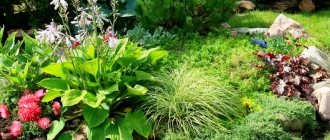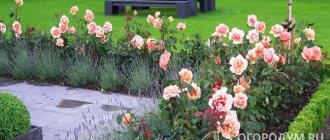Mock orange, which is often mistakenly called jasmine, is a picturesque spreading shrub that, in late spring, is covered with thick white flowers, the captivating scent of which will take your breath away. It has nothing in common with jasmine, an exotic shrub from the Olive family that grows in Asia and Africa. How to grow mock orange, planting and care in open ground, as well as interesting species and varieties are discussed in this article.
Jasmine and mock orange - what's the difference?
Mock orange is a common shrub that is often called jasmine. These plants are completely different species, they not only have different appearance and needs, but also belong to completely different botanical families. Therefore, it is worth taking a closer look at them so as not to make mistakes.
Jasmine
Jasmine (Jasminum) is an evergreen plant from the Oleaceae family that we usually associate with white, fragrant spring bushes. It is a climbing or erect plant. All species except jasmine are not found in our country, because most jasmines are exotic plants. Jasmine (Jasminum nudiflorum Lindl.) is a shrub with long shoots and yellow flowers, similar to forsythia flowers, almost odorless. Flowers appear in early spring from February to April. These shrubs do not tolerate large temperature changes that occur in our climate, and therefore are not suitable for year-round cultivation.
Several types of jasmine can be grown in pots, and although they are not the easiest to care for, they can sometimes be grown in apartments for a long time, for example:
- jasmine multiflorum is a creeping shrub, green leaves and white, intensely fragrant flowers that appear on the plant in December-April,
- Indian (Arabic) jasmine or sambac is a climbing shrub with white, fragrant flowers collected in umbrellas, blooming in summer from June to September.
Jasmines are easily grown as ornamentals in many warmer regions of the world. Jasmine teas and aromatic oils are prepared from several types. The flowers of this plant are also used in cosmetics and perfumes. In our country, real jasmine can only be grown in pots at home, because the plant does not tolerate low temperatures.
Chubushnik
A completely different plant is mock orange (Philadelphus), which belongs to the Hydrangeaceae family. Its white, charming flowers are a delight every spring and summer and usually smell great, but some species and cultivars are almost completely odorless. In our country, two types are mainly grown:
- Downy mock orange (Philadelphus pubescens) – odorless;
- Crown mock orange (Philadelphus coronarius).
These are shrubs of varying heights (1-5 meters) and flowering periods, but all species grown in our country are characterized by sufficient resistance to low temperatures and low cultivation requirements. Therefore, mock orange can be successfully planted in sunny and shaded areas, as well as in good or weaker soils. The bushes will grow well in different conditions, they just don’t like drought.
General rules for applying fertilizers
In order for jasmine to bloom timely and lushly, it is important not only to properly care for the bushes, but also to choose the appropriate fertilizers.
Agronomists have developed general rules for applying fertilizing, according to which the grower must:
- systematically fertilize the soil;
- introduce and alternate different types of fertilizers (organic, mineral and complex);
- select fertilizers, taking into account the type of soil and plant variety;
- take into account the timing and norms of applying a specific solution;
- distribute useful elements evenly over the entire surface;
- Follow manufacturers' recommendations for the dosage of a particular drug.
Description of the bush
Mock orange is naturally distributed in East Asia, North America, Southern Europe, and the Caucasus. This is a plant of the Hydrangeaceae family.
Mock orange is also known as jasmine, but this is a misnomer. It is confused with jasmine because of the sweet, pronounced aroma of flowers. The shrub is grown in gardens individually and in groups and is suitable for forming hedges. The plant is planted in city parks and industrial centers; the bush is resistant to air pollution.
White fragrant flowers appear among the oppositely arranged serrated leaves from May to July, depending on the variety.
Mock orange flowers are usually solitary and develop in the months of May-June. But there are varieties and hybrids with flowers:
- terry (for example, “Snowbelle”);
- semi-double (for example, “Virginal”).
There are low varieties:
- "White Dwarf", reaching approximately 1.2 m;
- "Erectus" - 1-1.5 m tall.
Interesting varieties with two-color or yellow leaves - for example:
- "Variegatus";
- "Innocence"
Some varieties have later flowering dates, for example in June-July:
- "Kalina"
- "Virginal"
The varieties listed above usually have a strong aroma, which, unfortunately, cannot be said about the fluffy mock orange (the lower part of the leaves is covered with delicate hair), which blooms in early summer (June-July) with numerous white, very beautiful flowers, but completely odorless.
The smell of mock orange is compared to the blossoming of citrus trees and, therefore, to the English name of the shrub - mock orange or fake orange.
Species, hybrids, varieties
About 70 species of these deciduous shrubs with evergreen leaves or leaves that fall in winter are known.
Common types of mock orange:
- Common (Philadelphus coronarius) – the most popular species, is a garden shrub with intensely fragrant flowers;
- Fluffy (Philadelphus pubescens Loisel);
- Odorless (Philadelphus inodorus);
- Semi-umbrella (Philadelphus cymosus);
- Lewis (Philadelphus lewisii);
- Small-leaved (Philadelphus microphyllus).
Interesting interspecific hybrids:
- Falconera (Philadelphus falconeri);
- Maiden (Philadelphus virginal);
- Lemoine (Philadelphus Lemoine).
Ordinary
Mock orange (Philadelphus coronarius) is a shrub that blooms from May to June with strongly fragrant creamy white flowers. Suitable for single plantings and creating fragrant spring hedges. The plant reaches a height of 3-4 meters. Numerous varieties are characterized by different growth, flowering season and flower color. The view is extremely charming.
Below are popular varieties of common mock orange.
Aureus
Mock orange variety "Aureus" is distinguished by pale yellow leaves in spring, turning yellow in summer. The shrub blooms from May to June, adorning the bush with creamy white, highly fragrant flowers. Growing the variety is not difficult. The plant tolerates polluted city air and periodic droughts well. You can replant the bushes and carry out heavy pruning. Rejuvenating the plant every few years thanks to heavy pruning will help maintain the beautiful shape of the bush and abundant flowering. The "Aureus" variety is sometimes used for formed hedges, lines, group and single plantings.
Photo. Variety Aureus
Bell Etoile
This is a low variety - up to 1.5 m tall with straight shoots and single flowers with jagged edges of the petals.
Variegatus
Variegatus - a variety of mock orange with dark green leaves with a white edge
Grandiflorus (Philadelphus grandiflorus)
Chubushnik grandiflora jasmine is a wide shrub reaching a height of 3 meters. Among the dark green leaves on the arched shoots, large flowers with a diameter of 4-5 cm appear in June.
Photo. Philadelphus grandiflorus
Fluffy (Philadelphus pubescens)
The fluffy mock orange is a very growing species - up to 5 meters in height. The grey-green shoots and undersides of the leaves are covered with hairs. From June to July, the tree is decorated with single, large, odorless, creamy-white flowers. The species is suitable for tall green decorative hedges. Pruning will rejuvenate the plant and give the bush the correct shape.
Photo. Philadelphus pubescens
Attractive hybrids
Falconera (Philadelphus falconeri)
Falconer's mock orange is an interspecific hybrid, distinguished by arched shoots, on which graceful, fragrant, numerous flowers with four petals, collected in clusters, appear from May to June. Grown in gardens and public places.
Photo. Falconer's mock orange
Purple-spotted (Philadelphus × purpureomaculatus)
This is a densely branched shrub, distinguished by the original appearance of its flowers. Pink and purple spots appear at the base of the petals of the crown. Varieties vary in color:
- "Belle Etoile" - the flowers of the variety are wide-bellied, have a pink-violet spot at the base of the petals of the crown;
- "Etoile Rose" - bell-shaped flowers at the root, carmine pink.
Lemoine (Philadelphus × lemoinei Lemoine)
Mock orange Lemoine allows you to decorate your garden space with an attractive low shrub with a wide crown. Semi-double and double flowers appear among the tiny leaves. Popular varieties:
- "Erectus" - jasmine with single, strawberry-scented flowers;
- "Manteau d'Hermine" and "Dame Blanche" - varieties with semi-double flowers;
- "Boule d'Argent" - distinguished by double flowers.
Maiden's (Philadelphus × virginalis Rehder)
Maiden's mock orange is a fast-growing wide shrub reaching a height of 2 meters. Dark green leaves fall off in winter. From June to July the bush is decorated with white fragrant flowers. Flowers are collected in small clusters. The bush grows well in a sunny and slightly shady location, in moderately moist and loamy garden soil. After flowering, cut off old shoots. The plant is used for hedges, single and group plantings. Reproduction occurs from cuttings and root layering.
Photo. Maiden mock orange
Snowbelle
The garden jasmine variety Snowbelle or “Snowstorm” is an upright shrub reaching a height of 2 m. The leaves are dark green, slightly pubescent, and fall off in the winter. The flowers are large, white, double, 5-6 cm in diameter. They appear in large numbers from June to July.
Jasmine 'Snowbelle' prefers loamy garden soils that are moderately moist and have a slightly acidic, neutral or alkaline pH. Grows well in sunny and slightly shady locations. The plant is resistant to low temperatures and pests. The bush is pruned after flowering - in July. The bushes are impressively presented as formed and unformed green hedges, individually and in groups.
Kalina
Mock orange Viburnum is an attractive shrub with stiff stems, 2 meters high. It is distinguished by serrated light green leaves, among which four-petaled snow-white flowers with golden stamens appear in June and July. Magnificent inflorescences consist of several flowers - 5-9 pieces. Numerous flowers have an intense scent. It is best to grow jasmine in sunny or slightly shady areas.
"Kalina" prefers not too wet, loamy, fertile soils, and is resistant to frost and air pollution. Pruning after flowering allows you to rejuvenate the bush and give it the correct shape; the procedure is performed every few years. The plant creates beautifully formed hedges and looks attractive when planted singly or in groups.
Growing and care
Although the shrub used to be very popular in gardens, it has become less common in recent years. It is easy to grow; you just need to choose a suitable place in the garden and know how to care for mock orange correctly, and then the plant will delight gardeners. Seedlings can be purchased at some nurseries. If the plant grows on a neighbor’s property, you can ask for several shoots and make seedlings yourself by rooting cuttings - the bush reproduces well vegetatively. Its ability to grow quickly can be used to decorate a boring looking wall or create a hedge from the street.
Landing
Mock orange grows well in the sun and in slight shade (the bushes do not bloom well in the shade). Planting attractive varieties requires fertile, permeable, limestone garden soil (optimum pH 6-8). Shrubs like moist soil, but tolerate prolonged drought. During drought, plants often become victims of aphids, which appear on young shoots, leaves and flower buds.
Mulching the soil around the bush will help retain moisture, preventing the soil from drying out. Lack of moisture can lead to leaf wilting and aphids. In heavily flooded areas, it is better to make drainage before planting - pour pebbles into the bottom of the planting hole.
Planting dates for mock orange:
- plants grown from cuttings are planted in spring or autumn;
- seedlings purchased from garden stores in containers with soil can be planted in open ground at any time during the year when the soil is not frozen.
If we want to get rid of regular watering, which is very important for newly planted plants, it is better to choose a planting time in early spring or (even better) autumn, when the soil has the most moisture and evaporation is not so intense.
Planting - step by step:
- We thoroughly clean the soil of weeds. Let's dig it up.
- We dig a hole. Planting pit dimensions:
- depth – 40-50 cm;
- diameter – 30-40 cm.
- The soil along the walls of the pit should be scraped off with a shovel to facilitate the development of roots. The easiest way is to cut the soil with a shovel using strong perpendicular movements to a depth equal to half the length of the shovel bayonet.
- Soak the root of the seedling for 30 minutes.
- It is recommended to loosen the root ball by hand. If, after removing the plant from the container, the roots are tightly curled, they should be cut in several places using scissors or a sharp knife. This will allow the plant to take root more easily.
- The shoots of the seedling are shortened by a third of their length, and dry leaves and shoots are removed.
- Drainage is placed at the bottom of the hole if necessary, a layer of soil is placed on top and the seedling is placed.
- Shrubs should not be planted too deep - the roots should be near the surface of the soil. The root collar should be located at ground level. Seedlings with a closed root system are planted at the same level as they grew in the pot.
- We have already poured the first layer of soil into the bottom of the hole. Now add soil up to half the height of the hole. New roots will grow, you need to provide them with a nutrient substrate. The remaining hole can be filled with regular soil dug from the garden.
- Lightly tamp the soil, forming a hole that will hold water when watering.
- We water the plant.
planting scheme depends on the variety and the intended design of the site. Usually the bush reaches a height of 2-2.5 m, sometimes 3 m. The width of the bush without pruning reaches 2 meters. Therefore, it will make a tall green hedge. Mock orange is planted on the hedge at intervals of 50 cm.
Bushes can be transplanted to other places at any age - they adapt perfectly to new conditions.
Trimming
Common mock orange grows quite quickly and chaotically, requiring regular, preferably annual, pruning. This care procedure improves the shape of the bush and determines the intensity of flowering growth. Unfortunately, improper pruning can do more harm than good, as flowers appear on two-year-old shoots.
Therefore, pruning begins only after the plant has flowered. Shorten shoots with faded flowers by about 1/3 of their length. The shoots are cut just above the branching or just above a strong shoot onto a side bud directed outward of the bush. This prevents branches from growing inside the bush, which will compact the crown too much. Thus, we thin out the plants.
Leaving too long leafless fragments below the cut will result in the formation of “unsightly” stumps - this part will die and become a breeding ground for pathogens.
Scheme. Proper pruning of mock orange.
- Incorrect trimming. Too close to the kidney.
- Wrong. Poor cutting angle.
- Wrong. Cut too high.
- The cut is made correctly above the bud, directed outside the bush.
Every few years, it is recommended to do thinning pruning - removing the oldest, thickest branches in the crown. Hedges can be trimmed several times a year, but they will bloom less profusely.
Attention! A tightly trimmed jasmine will not bloom profusely.
Regular removal of numerous root shoots has a positive effect on strengthening the bush.
Wintering
There is no need to use protective equipment for the winter; the plant is resistant to low temperatures. Mock orange bushes grown in Russia are fully adapted to our climate and do not require protection even in the coldest periods. This allows you to grow mock orange in the Moscow region, Siberia, and the Urals.
Watering, fertilizing
In the first year after planting, the young bush should be watered regularly so that the soil around it is always slightly moist. Old plants cope well without watering, except during periods of summer drought when there is no rain for a long time and the temperature remains high. Lack of watering during this period can lead to wilting of the bush.
Fertilizer is not necessary due to the shrub's self-sufficiency, but many gardeners who want intense, long-lasting blooms use a slow-release complex fertilizer in the spring. It is ideal to choose a preparation for flowering shrubs. The reason for fertilizing should also be very bad soil in the garden.
Reproduction
Mock orange is propagated in the following ways:
- separation of root shoots;
- semi-lignified or lignified cuttings.
Mock oranges tend to produce a lot of root shoots, which makes for better thickening of hedges. But this can become a problem for other plants growing nearby. The root shoots need to be dug up along with the roots from the mother plant and the mock orange planted in another place, preferably in spring or autumn.
Cuttings are cut in summer and planted in suitable soil in greenhouses. In winter, you can also cut woody cuttings, but they take root worse than thin young shoots.
Using a rooting agent will make rooting of cuttings easier. When germinating cuttings, it is worth slightly warming the soil from below, which will affect the rate of root formation. You also need to take care of constantly moist soil and supply it with liquid fertilizers.
At the beginning of the growing season, the rooted cuttings are transplanted to a permanent place in the garden.
Pests and diseases
Shrubs rarely suffer from disease - any problems with growth or flowering are usually the result of:
- overdrying the soil,
- too shady position
- excessive watering.
Leaf spot
Sometimes brown spots appear on mock orange leaves. They are round or oval, often with a darker border. In areas of stains, sheet fabric may crumble, forming holes. This is mock orange leaf spot. Infection with the disease occurs in the second half of summer. To combat leaf spot on ornamental shrubs, fungicides are used - Baymat, Topsin. Spraying should be carried out several times with an interval of 10 days. You also need to remove and burn fallen autumn leaves from under the infected bush.
Mold
Shrubs can be affected by mold. Its development is favored by rainy, humid and sunny weather. As a result of infection with this disease during flowering, flower petals become black and covered with a dusty coating. Brown spots of irregular shape appear on the leaves, which over time also become covered with a dust coating. The fight against this disease is carried out by spraying with the following means: Rovral Aquaflo, Teldor, Biosept Active.
Aphid
The main enemy of mock orange is aphids, which form large clusters of wingless insects from the beginning of May. As a result of aphid feeding, mock orange leaves become deformed and become covered with sticky secretions. It is necessary to fight insects quickly before they cause much damage, regularly spraying the affected plantings with a special preparation. Insecticides used: Decis, Karate Zeon, Mospilan.
Nematode
Angular black spots between the veins of jasmine leaves are the result of feeding on a pest - the chrysanthemum nematode. You can reduce the nematode population by removing infected leaves and carefully watering the plants under the bush. At the same time, spraying shoots and leaves is avoided - drops of water facilitate the movement of nematodes around the bush.
Mistakes gardeners make when applying fertilizers
Beginner gardeners often make mistakes when feeding jasmine bushes. The most common mistakes include:
- incorrectly calculated dosage. It is important to strictly follow the manufacturer’s recommendations when preparing the solution;
- violation of feeding deadlines. Above we indicated the preferred timing for applying fertilizers;
- use of drugs after the expiration date. The elements that make up fertilizers lose their beneficial properties over time, so feeding jasmine with expired fertilizer will be pointless;
- uneven distribution of the drug over the area. It is important to fertilize correctly to avoid a deficiency or excess of substances in a particular area of the soil.
Jasmine is an amazing shrub that delights with abundant and long-lasting flowering. This plant can become the highlight of a garden plot. But so that the crop does not lose its attractive appearance, it is worth feeding the bush correctly and developing your own schedule for fertilizing mock orange.
Application in the garden
Most often, mock orange is grown singly in gardens; with its flowering, the shrubs perfectly diversify the structure of flower beds and even the lawn. Ease of formation is a great advantage, which allows you to limit the bushes in height and width. The shrub is readily used to create hedges - formed and unformed, also in combination with other flowering shrubs.
Photo. Mock orange hedge
Mock orange should be planted in front of the house as an element that limits the view from the street, decorating the house, and also next to terraces and gazebos - as a source of shade and a wonderful aroma.
Cut branches can be used to make arrangements at home, which are not very durable, but create a very elegant decoration for the dining table.
You can also make a decoction of the leaves that effectively repels garden snails.
By the word “jasmine” most people mean mock orange. Although these plants do not have much in common, they both have a charming aroma. Therefore, it is worth adding a little natural aroma to your home or garden by planting this fragrant shrub. Mock oranges are easy to grow and make a strong statement in garden design.
What to plant next to mock orange
You can plant other garden plants next to jasmine.
Shrubs and tall flowers go especially well with it:
- Hydrangea.
- Lilac.
- Spirea.
- Weigel.
Jasmine looks good in single plantings and compositions.
The skeletal branches of mock orange are often exposed, so hostas can be placed next to it. Caring for them is also quite simple, especially since they prefer partial shade, which the bush will create.
Important! In close proximity to garden mock orange, you should not plant roses, gladioli and other demanding crops.
Jasmine actively takes up space and absorbs a lot of moisture and nutrients from the soil.











